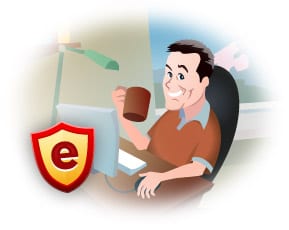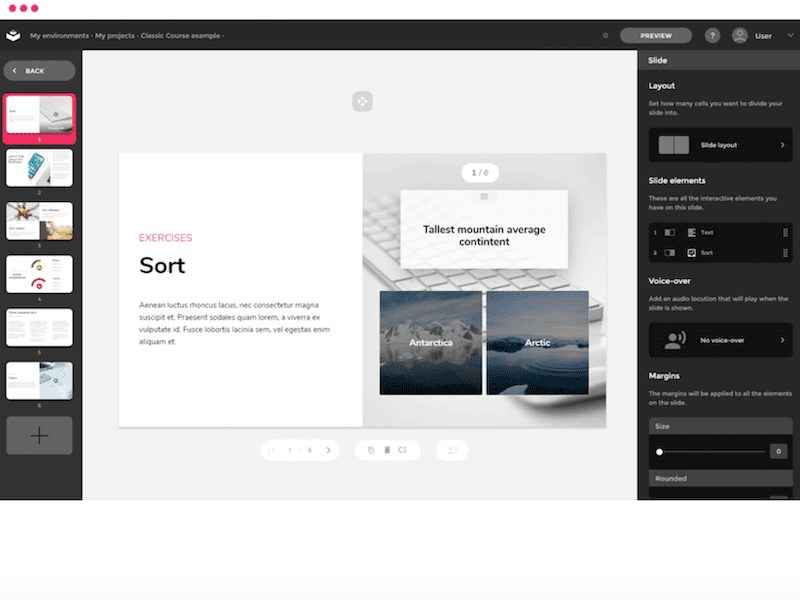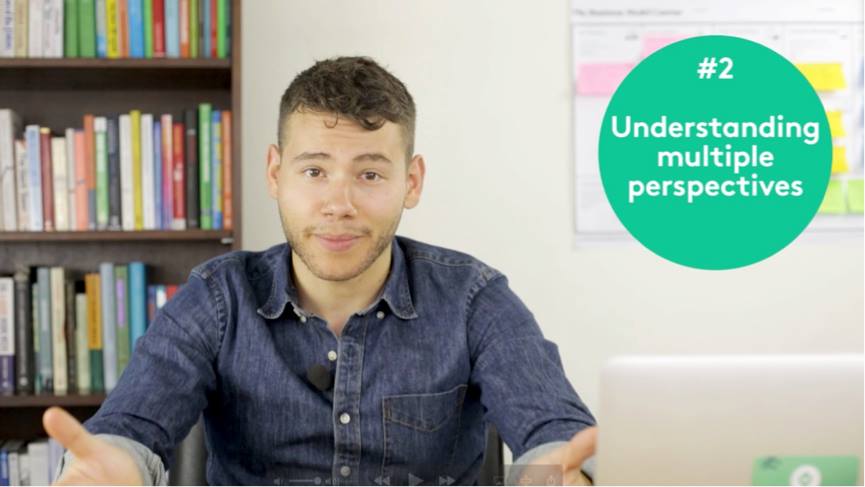
What if you could leverage a tool you probably already have on your computer and already know how to use as the basis for creating first-rate online education?
As many readers may already know, you can.
That tool is PowerPoint, and using it to create online education is one of the most popular forms of what usually gets referred to as “rapid e-learning.”
My guest for this episode has probably done more than any other single individual to make rapid e-learning a household term in the training industry. Tom Kuhlmann is the Vice President of Community for Articulate, makers of the popular Rapid E-learning Studio and Storyline products, and author of the wildly popular Rapid E-learning Blog.
When I say “wildly popular,” I don’t just mean wildly popular for a training blog: I mean wildly popular for any blog. Tom has built a base of more than 100,000 highly engaged subscribers over the past several years and has played a key role in driving the company’s growth.
In this interview you’ll find out more from Tom about the blog – like how on earth he got 100,000 subscribers for an e-learning blog! – and about his perspectives on e-learning and learning in general.
One of the things I ask Tom about – and this is something I quote him on in the book Leading the Learning Revolution – is his tips for how your average subject matter expert can create a decent piece of online education. Most experts, after all, don’t tend to be professional instructional designers or an e-learning developer.
Listen in for Tom’s advice.
Play the Podcast
Podcast: Play in new window | Download | iTunes
Get the Show Notes
03:18 – Intro of Tom Kuhlmann, Vice President of Community for Articulate.

03:40 – What on earth made the Rapid E-learning Blog take off like it did?! Tom himself was surprised – he thought maybe 15,000 would be a home run.
05:15 – Tom feels one of the things that worked for him was that he had actual background in building e-learning courses and could really speak to a broad range of needs. (Hmm…an expert sharing his knowledge.) He keeps it practical and simple.
06:35 – In the world of rapid e-learning, you have a lot of people who don’t come from a programming or e-learning background who suddenly have to build e-learning courses. No graphic background, no background in Web technology – the blog helps them make the leap.
07:25 – Does Tom think of himself as a teacher, as someone providing continuing education? Tom notes that Articulate is rarely mentioned on the blog, but he wants to make sure that people get as much value as possible out of the software they have purchased, and also to contribute in a meaningful way to the e-learning community. He does see the blog and the extended community as informal continuing education.
09:05 – How has rapid e-learning transformed the training and education landscape?You used to have whole teams building courses – it took a lot longer. The rapid tools take away the need to program. If you know PowerPoint you can get it into Flash. Most of the critics of rapid tend to be vendors who were selling e-learning course production (Note: I was one of these people once upon a time, dear readers.) These people have been displaced to a large degree.
11:55 – Rapid has democratized the market (I smell a revolution!). It used to be that if you didn’t have money, you didn’t build e-learning. No longer.
13:00 – You go to conferences now, and the conversation isn’t so much about programming – like it used to be – it’s about how to build better learning experiences.
13:20 – What about people who are not instructional designer now having the ability to use PowerPoint to make a course. You can end up with some pretty bad stuff. What are Tom’s tips for creating a decent online education experience if you are not a designer?
Excerpt from Leading the Learning Revolution:
Let’s say that you’re a subject matter expert and you’re thinking, “I’ve got all this great knowledge. I can take it online. I can build a business around this. I’m going to make some e-learning courses.” What are the key skills or knowledge you need to make a good course? I asked this question of Tom Kuhlmann, author of the wildly successful Rapid E-learning Blog.
The first step, Tom suggested, is to understand whether or not it really needs to be a “course.”“If you’re just having them read screens of information,” he noted, “then maybe a PDF is a better solution than authoring a course.” While arguably there is not really much difference between reading text on a PDF and reading text in a course, people bring different expectations to a course.
Once you have determined that a course is really the right approach, Tom sees visual design as perhaps the most necessary skill for developing courses that stand out. He emphasized that, while instruction is an important part of visual design—the visuals need to support the other content in an appropriate way—emotion is equally important. “E-learning is mostly a visual medium,” he said, “and people are drawn to those things that look good and make them feel good. There’s an emotional connection to what they’re doing. They like to click things. They like to roll their mouse over buttons and move things around. That’s an important part.”
Finally, Tom noted that simply making the effort to be consistent visually, to “make your buttons look like buttons” and make every- thing “look like it all belongs to the same course” can go a long way toward creating a polished, effective learning experience.
15:30 – Tom mentions the value of being able to review the entries for the Articulate Guru Awards.
17:05 – Tom says one of the main questions he asks when developing e-learning is how to get the learner to “touch the screen” – i.e., do things on the screen with the content, to practice doing the things you teach them. Storyline, Tom says, makes building this kind of interactivity about as easy as working in PowerPoint.
Tom talks about Storyline and the future of e-learning
17:50 – Articulate Presenter and similar products provide for fairly structured learning experiences. How does Tom see these types of experiences intersecting with less formal learning? Tom talks about the ability for anyone to create a YouTube video or screen record. “Money shot” for the interview:
Essentially anybody at this point is an expert. Everybody knows something. They have something they can teach other people.
Years ago there was no way to capture this easily. Now there is a vehicle to let anybody share their learning and share what they know.
20:00 – Have to have aggregators, curators to help you make sense of the flood of information. Otherwise you feel overwhelmed with the volume of content that comes at you. You have to have authorities and experts who serve essentially as teachers in being good curators.
[Notable that Justin Bieber gets mentioned in this segment – the second time in the series of interviews I conducted for the book! See my interview with marketing and branding expert Dorie Clark.]
21:10 – Tom sees himself as a curator in writing the Rapid E-learning Blog (Who are your curators?)
21:40 – Can be challenging for organizations that rely on outside experts. Makes the process of curation challenging.
22:20 – Many organizations fall back on Webinars as the main thing they are able to do online. What’s Tom’s perspective? What he likes about Webinars is that no one sees him – he can look at his notes when delivering one. And that they can be recorded – made available, potentially tied to communities. Some of the negatives are that it may be hard to make up for “presenting deficiencies” when you are not in the same room with people. You aren’t able to see their faces and body language. It’s hard to create real conversation in a Webinar (See my “How We Learn” interview with Prof. Monisha Pasupathi for additional perspectives on Webinars.)
25:10 – Tom also thinks most Webinars may be too long. Shorter form learning content may actually be more effective and more valuable. 15-20 minute “quick hit” sessions.
26:50 – A significant issue with Webinars is the need to associate continuing education credit with them – which tends to require 1-hour units.
27:25 – What does Tom see coming down the pipe that has him excited? Tom discusses his experience home schooling his kids. References a book by John Holt on educational reform – 10M people going through basically the exact same educational “gulag.” No company would actually sell a product like this – there is competition, people can choose what they want to choose. This has not been the case so much in education – but the home school market is an example of that changing.
29:30 – When you look at the convergence of easy authoring and distribution, the ability for anybody to share their expertise – look at the success of approaches like the Khan Academy, for example – this opens the door to education, to letting people think about different ways to teach and learn.
30:35 – Draws comparison to the impact that blogging has had on newspapers and the complaints from traditional newspaper people that blogging fragments the market. But the market is already fragmented – it’s just that a handful of large organizations controlled the market before. A similar situation exists in education – but that is changing rapidly. The shift creates incredible opportunities – think, for example of less developed countries where people can now get access to education they would not have had access to before.
32:50 – Wrap-up of interview. Find Tom at The Rapid E-learning Blog.
While you are there, check out great resources like Rapid E-learning 101 and be sure to subscribe to get the 46-page eBook The Insider’s Guide to Becoming a Rapid E-learning Pro.
If you like the podcast, please consider giving it a brief review on iTunes and share it with others. Thanks!
Podcast: Play in new window | Download | iTunes
The theme music for Learning Revolution is The Information Age by Anthony Fiumano, available on the Podsafe Music Network.
P.S. – Sign up for updates and get my eBook The Learning Revolutionary’s Toolbox and Chapter 1 from Leading the Learning Revolution!



Yes, PowerPoint is one of the first tools what started to build the online education’s world but sadly it’s not enough for a “rapid e-learning”. When we start to learn online, we find many barriers on the road. First of all, we need to collect information about the interesting subject (Obviously I can’t make a powerpoint presentation if I don’t know what am I talking about). I’ve found a way for a faster “reading”, I have found a nice tool what reads any text for me without problems http://www.ispeech.org/text.to.speech. it helps me a lot, I think it deserves a try.
Thank you for sharing this excellent article. I really enjoyed reading about his day. I have directly linked to this blog from http://www.classroom20.co.uk (under the Articulate software page).